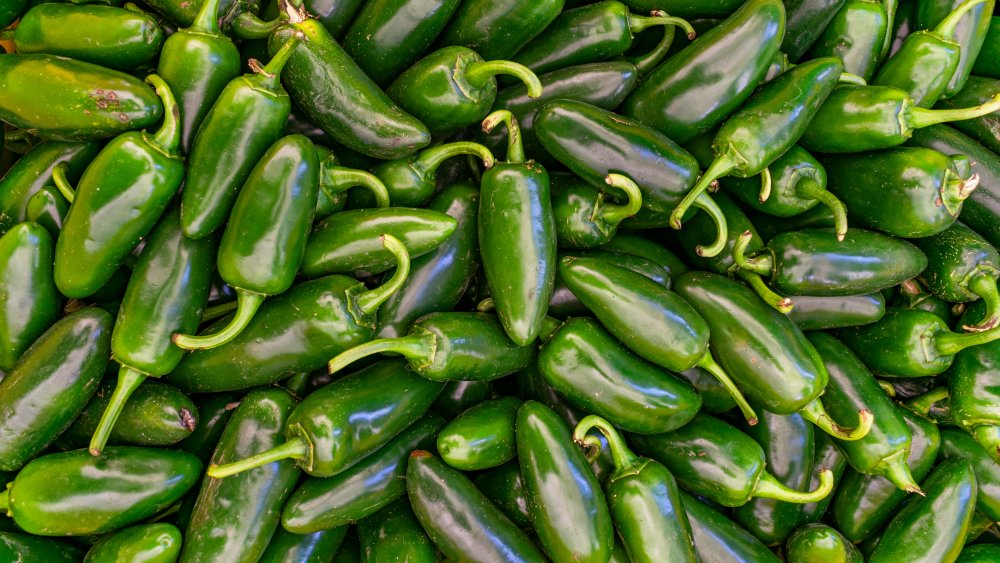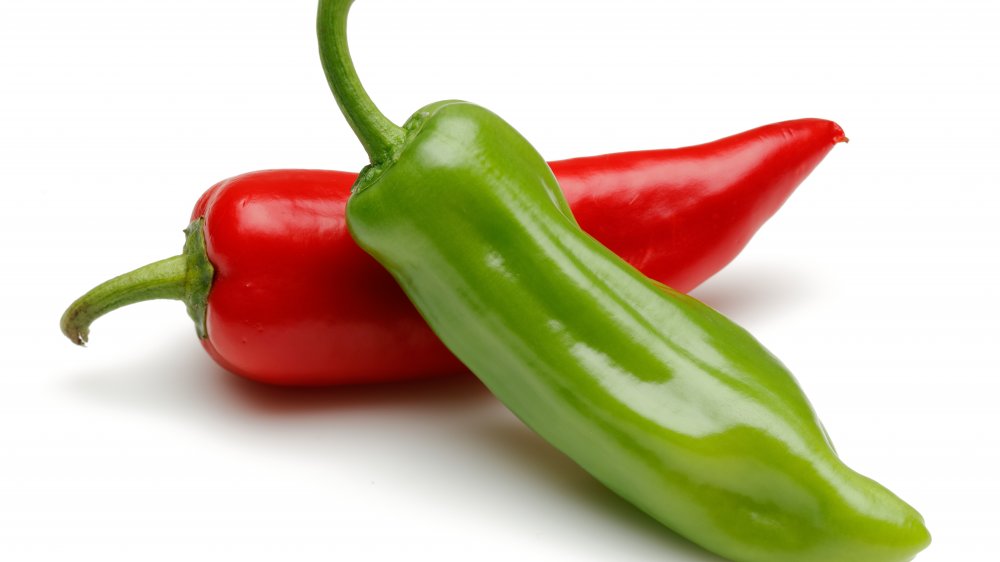The Reason Some Jalapeno Peppers Are Hotter Than Others
Jalapenos bring the heat to your taste buds — that slow burn that makes your nose run, cleans out your sinuses, and makes your mouth do the cha-cha all in the same breath. Jalapenos are, in a word, "hot." It might surprise you to learn these spicy peppers are actually a fruit, hailing from the flowering plant known as the capsicum annuum, which is a member of the nightshade family (via Chili Pepper Madness). According to Pepper Scale, the Jalapeno gets its name from the capital of Veracruz, Mexico — "Xalapa" or "Jalapa" — where these peppers are famously cultivated.
While we love green and red jalapenos in our nachos, sandwiches, salsas, and pretty much anywhere else we want to add a kick, these fiery peppers are actually considered to be fairly tame when we are talking about that burning sensation we've grown to expect when we eat them. In fact, the average jalapeno tends to clock in somewhere between 2,500 and 5,000 Scoville heat units on the Scoville Scale (via Chilli World). According to Livestrong, the Scoville Scale measures the spiciness of a pepper on a scale that ranges from 0 all the way to 16,000,000 units of heat. But have you ever noticed that some jalapeno peppers are hotter than others and wondered why? Well wonder no more.
Several factors can influence a jalapeno's heat
Per Livestrong, when we say the Scoville scale is measuring a jalapeno's spice level, what we actually mean is the scale is measuring the amount of capsaicin a pepper contains. This is the element of chili peppers that packs the heat and makes your mouth feel like a five alarm fire is occurring. The greatest concentration of capsaicin in a jalapeno pepper can be found in its seeds and the white pith according to Mexican Please, so if you like the taste of the jalapeno, but find it too hot to handle, you can always remove those two elements to calm the heat. But if they all have the seeds and the pith intact, what makes one jalapeno hotter than another?
Chili Pepper Madness notes that there are a range of factors that make some jalapenos hotter than others, include the age of the fruit; how thick the inner placenta that holds the seeds and pith might be; and the climate, soil, and moisture of the location where it was grown. All of these variations can influence where a jalapeno will land on the Scoville Scale. The low end of the heat scale for a jalapeno is around 2,500 Scoville units, and the high end is about 8,000. If you want a sweeter, milder jalapeno, the outlet suggests looking for the red ones, which are simply older and riper jalapenos that have stayed on the vine longer than the plant's youthful green fruit.

